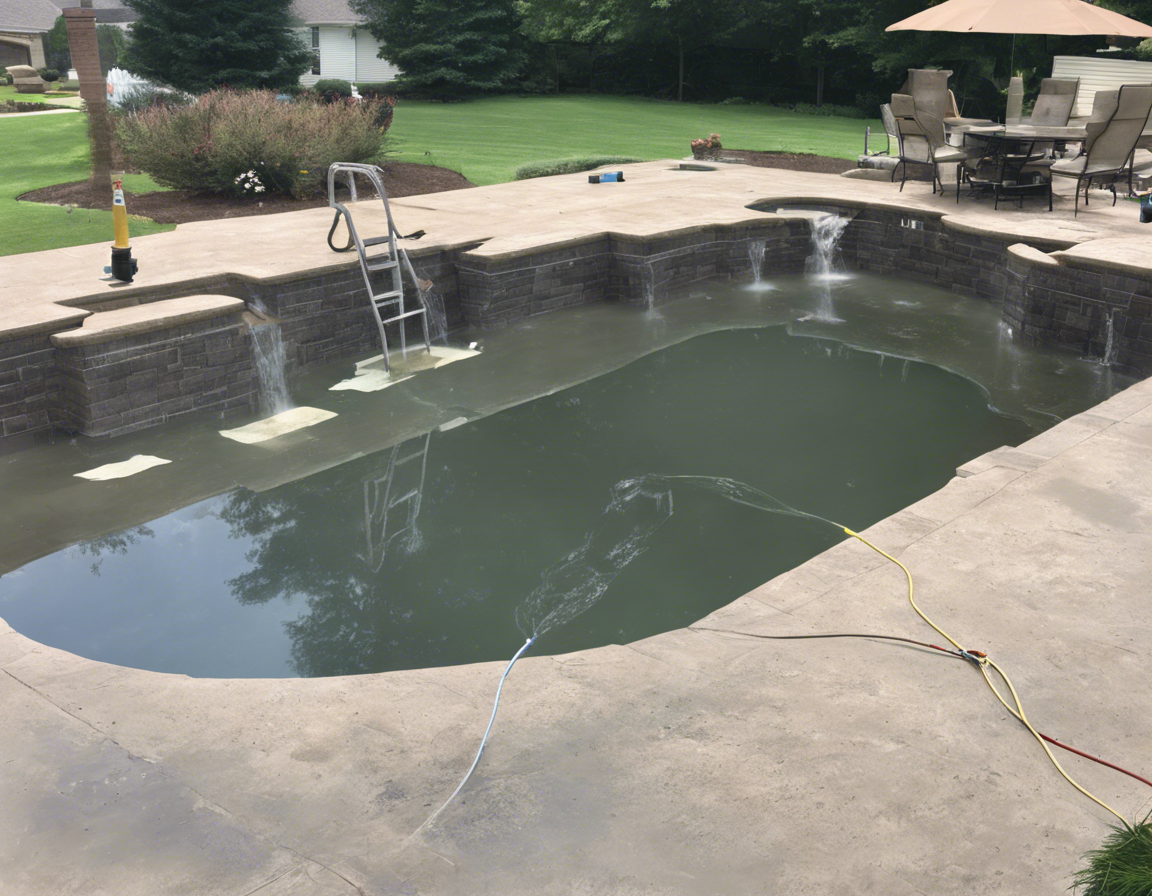Introduction
Pool leaks are a common issue faced by pool owners that can result in water loss, increased water bills, and damage to pool equipment and surrounding structures. Detecting and repairing pool leaks promptly is crucial to prevent further damage and maintain the integrity of your pool. In this ultimate guide, we will delve into the various tips and tricks for identifying, locating, and repairing pool leaks effectively.
Signs of a Pool Leak
Before diving into pool leak repair, it is essential to know how to identify if your pool is leaking. Some common signs of a pool leak include:
- Decreased water level: If you notice that your pool’s water level is consistently dropping more than usual, it may indicate a leak.
- Cracks or damage: Inspect your pool for any visible cracks, tears, or damage in the walls, floor, or around fittings.
- Algae growth: Excessive algae growth, despite regular maintenance, can be a sign of a leak providing nutrients for the algae to thrive.
- Soggy or wet patches: Check the area around the pool for soggy or wet patches, which could indicate water seepage from the pool.
- Air bubbles in pump: If you notice air bubbles in the pump basket or a drop in water pressure, it could be due to a leak in the suction line.
Identifying the Leak
Once you suspect a pool leak, the next step is to identify its source. Here are some methods to help you pinpoint the leak:
- Bucket test: Conduct a bucket test by filling a bucket with pool water and placing it on the pool step. Monitor the water level inside the bucket against the pool water level to determine if water loss is due to evaporation or a leak.
- Dye test: Add a few drops of leak detection dye or food coloring near suspected leak areas and observe if the color gets drawn into any cracks or crevices.
- Pressure test: Conduct a pressure test by shutting off the filtration system and observing the drop in pressure to isolate potential leaks in the plumbing.
- Leak detection technology: Utilize advanced leak detection technology such as electronic leak detectors or cameras to pinpoint leaks more accurately.
Repairing Pool Leaks
After identifying the pool leak, it’s time to proceed with the repair. Depending on the location and severity of the leak, you can opt for the following repair methods:
- Patch or sealant: Small leaks in the pool liner or surface can be repaired using patch kits or underwater sealants.
- Crack repair: For cracks in the pool structure, epoxy or acrylic patching compounds can be used to seal the gap effectively.
- Pipe repair: Leaking pipes or fittings can be fixed by replacing or resealing the damaged section.
- Professional assistance: In cases where leaks are hard to detect or repair, seeking help from professional pool repair technicians is recommended.
Preventing Future Leaks
To avoid dealing with pool leaks in the future, here are some preventive measures you can take:
- Regular maintenance: Maintain proper pool chemistry and cleaning routines to prevent wear and tear on the pool components.
- Monitor water level: Regularly check your pool’s water level and address any sudden drop promptly to prevent further damage.
- Inspect for damage: Conduct regular inspections of your pool for any signs of damage, cracks, or leaks.
- Winterization: Properly winterize your pool to prevent freezing and thawing damage that can lead to leaks.
FAQs (Frequently Asked Questions)
1. How can I differentiate between evaporation and a pool leak?
– To differentiate between evaporation and a leak, conduct a bucket test where you compare water loss in the pool to water loss in a bucket placed on the steps.
2. Can I repair a pool leak myself, or should I hire a professional?
– Small leaks or surface cracks can be repaired by homeowners using patch kits or sealants. However, for complex leaks or plumbing issues, it is advisable to seek professional help.
3. How much does pool leak repair usually cost?
– The cost of pool leak repair can vary depending on the extent of the damage and the repair method required. On average, repairs can range from $200 to $2000.
4. How long does it take to repair a pool leak?
– The duration of pool leak repair depends on the type of leak and the repair method. Simple surface repairs can be done in a few hours, while complex plumbing leaks may take a few days.
5. Are there any temporary solutions to minimize water loss from a pool leak?
– Using waterproof tape or temporary sealants can help minimize water loss temporarily until a permanent repair can be conducted.
In conclusion, being vigilant about pool maintenance, promptly identifying and repairing leaks, and taking preventive measures can help ensure your pool remains in top condition. By following the tips and tricks outlined in this guide, you can effectively address pool leaks and enjoy a leak-free swimming season.
